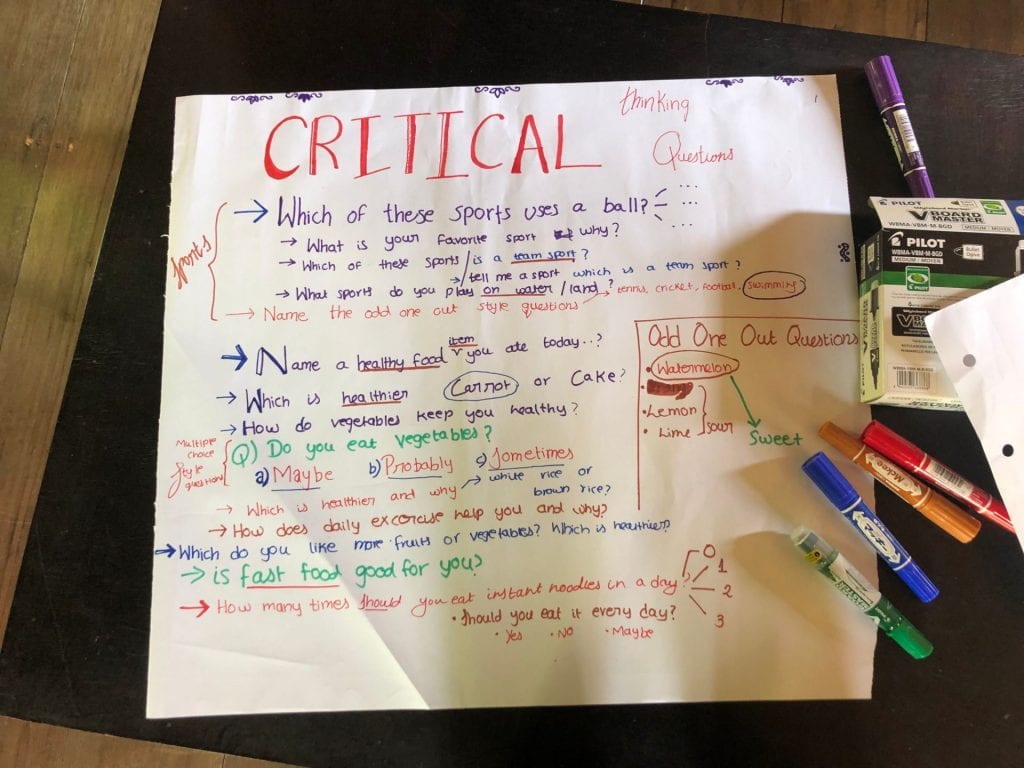During our second trip to Bintan from 15th to 17th January, we got around to presenting our lessons to our peers and the staff of The Island Foundation, followed by the students of TIF. We had been preparing these lessons for months beforehand (which involved a prior trip to Bintan), and the time had finally come to deliver the lesson and try and meet the needs of TIF.
Our initial ‘practice’ lesson was a solid start. We felt our activities were strong and had good potential, and that we had managed to get all our points across. However, our time management was what let us down. Since we hadn’t run through the lesson in its entirety beforehand, we had put down estimates on our lesson plan. Being estimates, these weren’t exactly accurate. Some activities went for shorter than expected, while some required more time than we had anticipated. At this point, our lesson was interactive, built on 21st century skills, and was relevant to the context, but didn’t always involve chunks, wasn’t managed all that well, and the puppet show may have been a bit too complex for the TIF students. However, this was just the start, and we’d layed down a solid foundation.
Our first SWOT analysis can be seen below:
It was eventually decided that the best thing to do would be to merge the two lessons of Group 3 and Group 4 into one that incorporated the strengths from the lessons of both groups’ lessons, since both were about exercise and activity. This was probably the best decision, since both lessons had their distinct strengths and opportunities, and merging them into one all-encompassing lesson gave way to so many avenues we could have taken.
The final lesson incorporated one warm up and one main activity from Group 3’s lesson, and one main activity from Group 4’s lesson. From Group 3’s lesson, we used a traditional Indonesian version of ‘Rock, Paper, Scissors,’ as the warm up, since it got students engaged while addressing the cultural aspect of the critical challenge, and a fortress-style game, which incorporated questions and language chunks, while getting students moving about. From our lesson, we used the exercise stations, since it got students up and moving, and due to the nature of each exercise representing a common occupation in Bintan, was relevant to the culture. We added songs to select exercises (which the children really enjoyed), and addressed the hygiene concern by having students wash their hands after picking up trash.
The SWOT analysis of the combined final lesson can be seen below:
The final lesson was a clear success. Though we weren’t able to get through absolutely everything we’d planned due to time constraints, we can rest assured that each student walked out of that lesson happier yet more aware as well, which is what the critical challenge is all about. From our original lesson, The Island Foundation particularly enjoyed the idea of exercise stations, which they said they’d like to implement into their own lessons. They asked us to share the document containing the details of all the 4 exercises and the relevant chunks with them, to help them incorporate that into their lessons. They also enjoyed the idea of having students create their own puppet show, since it enhances all three 21st century skills. They told us that they will look to implement that idea into some of their more advanced classes, along with a list of chunks we made for the puppet show. As for the larger combined lesson, they’d asked us to come up with some more questions that could be asked while playing the fortress game, which we finished on the Thursday morning before leaving.
Since The Island Foundation saw potential in both of our main lesson components (exercise stations and puppet show) and will be looking to implement them into their own lessons, we can say that we did successfully meet the needs of The Island Foundation.

